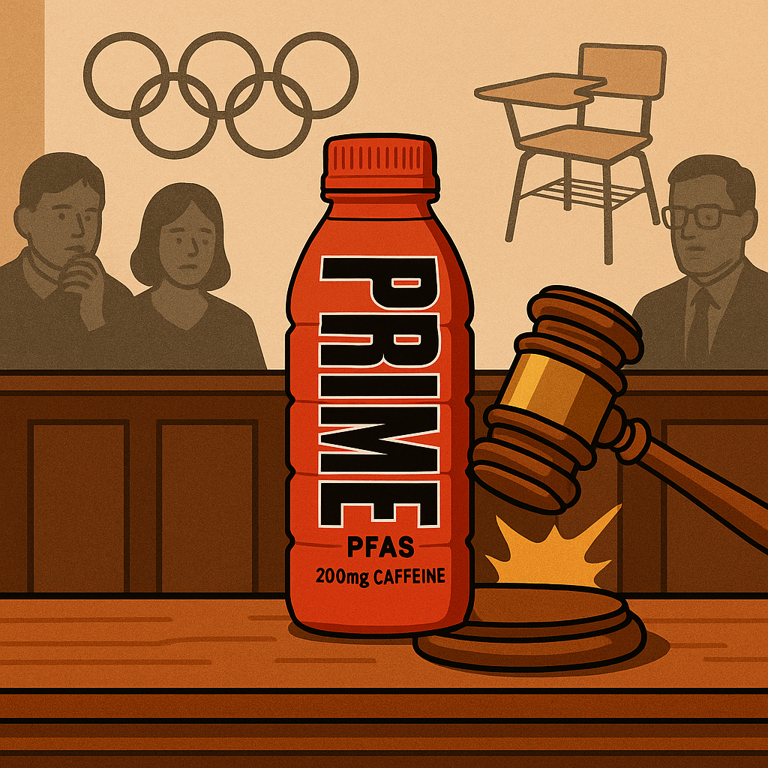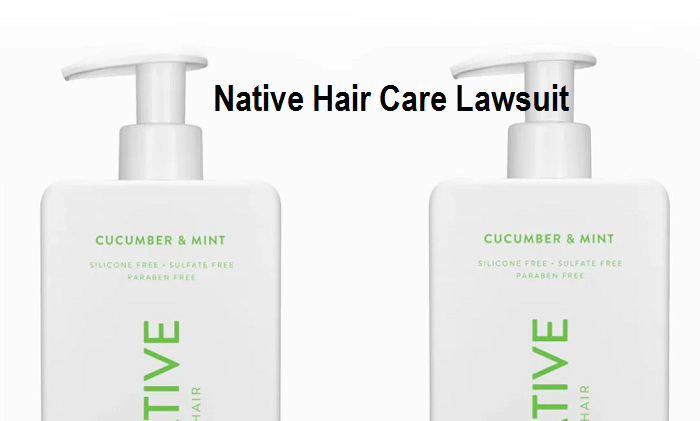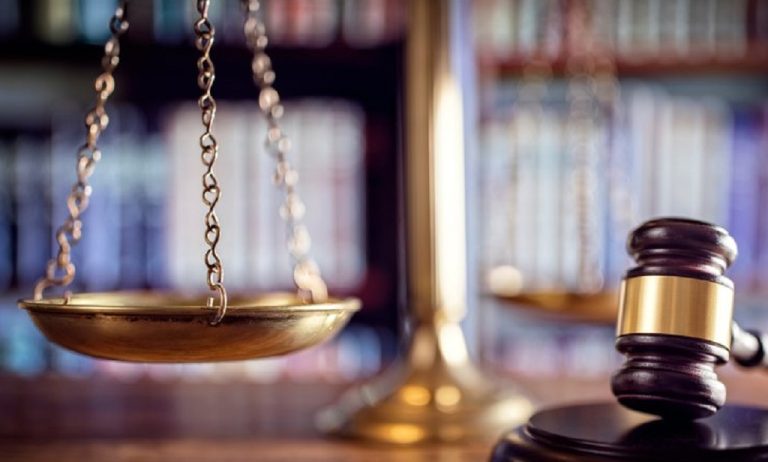The Prime drink lawsuit has captured national attention as the popular energy drink brand faces mounting legal challenges. Prime Hydration, founded by YouTubers Logan Paul and KSI, quickly gained traction among teens, athletes, and social media fans. From corner stores to school hallways, the product became a viral hit. But beneath the marketing hype lies a wave of serious allegations.
Several lawsuits now accuse the company of misrepresentation, health risks, and unauthorized branding. Parents, doctors, and competitors argue that Prime failed to protect young consumers and misled the public. Courts are examining whether Prime breached laws on safety, labeling, and advertising. Legal experts warn this could be one of the biggest product liability cases in the beverage industry.
This article breaks down every aspect of the Prime drink lawsuit—from PFAS and caffeine issues to Olympic trademark claims. You’ll also learn who can sue and how to take action if you’ve been affected.
What Triggered the Prime Drink Lawsuit?
Multiple lawsuits have triggered the Prime drink lawsuit. Consumers, corporations, and government bodies are all involved. Here’s a breakdown:
PFAS Contamination
Prime Hydration is accused of containing per- and polyfluoroalkyl substances (PFAS), known as “forever chemicals.” These compounds don’t break down easily. They remain in the environment and the human body. Exposure is linked to cancer, liver damage, and infertility.
Plaintiff Elizabeth Castillo filed a class action in California. Her attorneys submitted lab reports showing PFAS in Prime grape-flavored drinks. They argue that the company failed to disclose these toxic substances. If proven true, this could lead to massive liability.
Excessive Caffeine Content
Another lawsuit claims Prime Energy drink contains more caffeine than advertised. Labels say 200 mg per can. But tests revealed 215–225 mg. That’s more than six cans of Coke in one serving.
The case argues Prime targets kids through influencer marketing. Doctors and parents say the high caffeine can cause jitters, anxiety, and heart risks. The company gave few warnings and placed products in youth-centered stores.
Breach of Manufacturing Contract
Refresco Beverages, a global drink manufacturer, sued Prime for $68 million. Refresco claims Prime signed a deal but failed to meet purchasing obligations. The company built custom production lines for Prime’s bottle shape. Prime allegedly backed out without paying.
Refresco wants compensation for its losses. This case could halt future Prime production and disrupt retail supply.
Trademark Infringement
The U.S. Olympic and Paralympic Committee (USOPC) accuses Prime of stealing its branding. Prime released a “Going for Gold” promotion using images and phrases related to the Olympics and Team USA.
USOPC owns those trademarks. They say Prime used them without permission. The committee demands monetary damages and a court order to stop further use.
Dispute with Messi’s Mas+ Brand
Messi’s team claims Prime copied the design of its Mas+ bottles. They argue the packaging looks nearly identical. Prime responded with its own lawsuit, claiming Mas+ copied them first.
This packaging dispute could lead to fines or forced rebranding. The public feud has also drawn unwanted attention from regulators.
Does Prime Energy Have Too Much Caffeine?
Yes. Prime Energy’s caffeine content exceeds industry norms. Each can contains more caffeine than Monster or Red Bull. The label lists 200 mg per 12 ounces. But independent tests show more.
Children and teens drink these regularly. The FDA warns against caffeine for anyone under 18. Lawsuits say Prime failed to protect young consumers. The company made its drinks look fun and safe. Bright colors, YouTube ads, and sports branding misled parents.
Excessive caffeine causes insomnia, nausea, high blood pressure, and anxiety. For children, the risk is greater. Lawsuits aim to force better labeling and possible bans from schools and retailers.
Is There PFAS in Prime Hydration?
PFAS chemicals are now a major issue. Prime allegedly contains these substances in its hydration line. The chemicals resist heat and water, making them useful in manufacturing. But they’re harmful to humans.
Health studies link PFAS to kidney problems, thyroid disease, and immune system issues. Drinking PFAS regularly—even in small amounts—can be dangerous. The lawsuit alleges Prime failed to test ingredients or warn buyers.
Plaintiffs want compensation and removal of affected drinks. Prime denies wrongdoing but has yet to provide counter-testing results.
What Happened Between Prime and Refresco?
Refresco spent millions retooling factories to make Prime bottles. In return, Prime promised a minimum purchase agreement. Refresco says Prime didn’t follow through. They suffered losses from unused inventory and idle production.
The lawsuit outlines breach of contract, financial harm, and bad faith. Prime’s lawyers argue the contract lacked enforceable terms. Courts will decide if Prime acted unfairly. If Refresco wins, Prime may owe tens of millions and face public scrutiny.
Why Did the Olympic Committee Sue Prime?
Prime released a “Going for Gold” energy drink edition. It featured Olympic-themed colors, Team USA references, and Olympic slogans. But Prime never secured permission.
The U.S. Olympic and Paralympic Committee owns those rights. The lawsuit claims trademark infringement and deceptive marketing. Prime says it was a “tribute,” not endorsement.
Courts will decide whether it confused consumers. The committee wants financial damages and a ban on any future Olympic-related branding.
Is There a Dispute with Lionel Messi’s Mas+ Brand?
Yes. Mas+ and Prime both claim ownership over their signature bottle style. Mas+ says Prime’s packaging mimics their design too closely. Prime counters by accusing Mas+ of copying their visual identity.
The design includes color-blocked labels, tapered bottles, and bold fonts. This visual overlap has confused consumers. Lawsuits are now pending in both the U.S. and Europe.
If courts side with Messi’s brand, Prime may face a rebranding requirement. It could also owe damages for packaging theft and lost sales.
What Did the Courts Say? What’s the Status Now?
As of 2025, most lawsuits are pending. Judges in California and New York have denied Prime’s motions to dismiss. That means the cases have enough merit to proceed to discovery.
The court has ordered lab records, internal marketing emails, and sales data. Prime must produce evidence or face default judgments. Experts expect the first rulings to arrive late this year. No damages have been awarded yet. But early signs suggest judges take the allegations seriously.
What’s the Status Now?
Multiple class-action lawsuits remain active against Prime Hydration / Prime Energy. Key claims allege the presence of PFAS (“forever chemicals”) in certain drinks — especially the grape flavor — and misleading labeling about caffeine content.
Some PFAS-related claims (focused on alleged undisclosed chemicals) continue to be pursued.
However, at least one of the caffeine-mislabeling class actions was dismissed recently. A federal judge ruled that alleged excess caffeine did not amount to a material misrepresentation under the law. Top Class Actions
Because of that dismissal, not all claims have equal momentum. PFAS-based claims appear to retain stronger viability than some caffeine-labeling claims.
No public final settlement or verdict has emerged yet as of December 2025. The litigation remains in various stages (some in active discovery, some pending class-certification, others dismissed) depending on the specific claim and court.
The overall lawsuit landscape against Prime remains mixed and fluid. Some claims are ongoing (mainly PFAS-related), while others (especially caffeine-labeling claims) have been knocked out. Consumers / plaintiffs must evaluate carefully which cases still hold legal potential.
Timeline of Major Events in Prime Drink Lawsuits
| Date / Period | Event |
|---|---|
| August 2023 | First major class-action lawsuit filed alleging undisclosed PFAS in Prime Hydration grape drinks. |
| 2023 (following months) | Additional claims filed alleging high caffeine content and false advertising for Prime Energy drinks. |
| Early 2024 | Independent testing and court filings publicized PFAS detection in certain Prime products. PFAS claims gained media and public attention. |
| May 2024 | New class-action complaint filed over alleged mislabeling of caffeine and misleading marketing. |
| 2024–2025 | Several lawsuits consolidated under consumer-protection and product-liability themes (false advertising, misbranding, breach of warranty, etc.). |
| August 2025 (recent) | A U.S. federal judge dismissed one prominent caffeine-mislabeling class-action suit. Court found plaintiffs failed to prove a material misrepresentation. |
| Mid–2025 (ongoing) | PFAS-related class action(s) continue. Plaintiffs investigate scope, test results, and potential expansion to other products. |
What This Means Going Forward
If you consumed Prime — especially the grape-flavored hydration drink — and are concerned about PFAS exposure, the ongoing PFAS class-action provides a potential legal path.
Caffeine-mislabeling claims may be harder to win after the August 2025 dismissal; plaintiffs must show clear material misrepresentation.
As no settlement or verdict is public yet, anyone interested should act fast: document purchases, keep receipts, and monitor class-action notices.
Who Can File the Prime Drink Lawsuit?
Anyone affected by Prime’s products may qualify to join the lawsuit. This includes:
- Parents of children harmed by the drinks
- Individuals who suffered side effects
- Consumers who bought Prime based on false claims
- Competitors impacted by trademark violations
Class actions are forming across the U.S. Affected individuals can join by filling out a claim form. Lawyers will screen applicants for eligibility.
How Can You File a Lawsuit Against Prime?
Start by contacting a consumer protection or product liability attorney. Many law firms now represent Prime claimants. You’ll need proof of purchase, medical records (if harmed), or photos of misleading packaging.
Some firms offer free consultations. Others charge only if you win. If eligible, your claim may join a larger class action. This process increases impact and reduces personal cost.
Keep records of all Prime products you consumed. Save receipts, product images, and news articles.
Conclusion: Is Prime Hydration in Legal Trouble?
Yes, Prime faces major legal risks in 2025. Courts are allowing lawsuits to move forward. Plaintiffs include individuals, corporations, and national committees. The issues range from toxic ingredients to contract fraud.
If Prime loses, it may owe millions in damages. It may also need to change labels, reform marketing, or stop sales in some regions. Beyond money, this is a reputational crisis.
Logan Paul and KSI must now defend their brand in court. Consumers deserve honesty, especially when health is involved. Prime’s flashy growth may slow under legal pressure. Transparency, safety, and regulation must come first.
The prime drink lawsuit remains critical. This case may redefine rules for energy drinks and influencer-led companies in global markets.
Frequently Asked Questions About the Prime Drink Lawsuit
Why is Prime being sued?
Prime is facing lawsuits for PFAS contamination, excessive caffeine content, false marketing, contract breaches, and trademark infringement.
What are PFAS and why are they harmful?
PFAS are synthetic chemicals linked to cancer, hormonal imbalance, and immune issues. They are known as “forever chemicals” because they persist in the body and environment.
Is Prime safe for kids to drink?
Prime Energy contains high caffeine levels unsuitable for children. Health experts warn of insomnia, anxiety, and heart risks from regular consumption.
How can I join the Prime class action lawsuit?
Contact a consumer protection lawyer. Share evidence like receipts, product images, and medical reports if applicable. You may join ongoing class actions.
Has the court ruled on the Prime lawsuits yet?
No final rulings yet. Courts have denied dismissal motions. Cases are in discovery. Rulings are expected late 2025.




